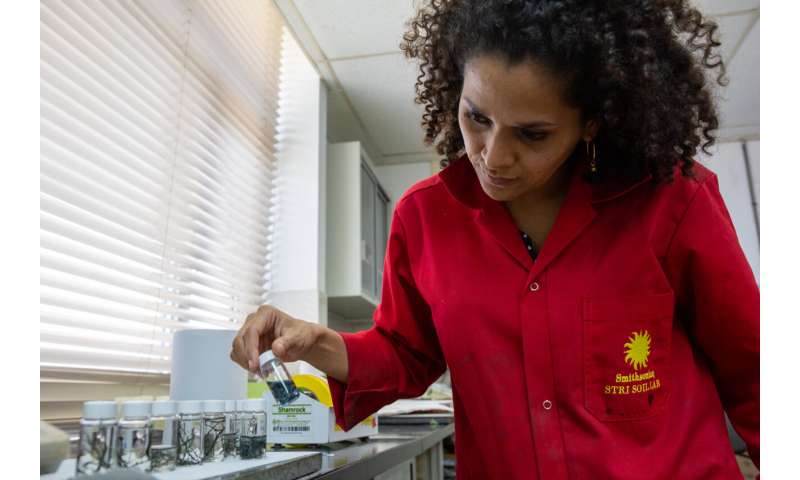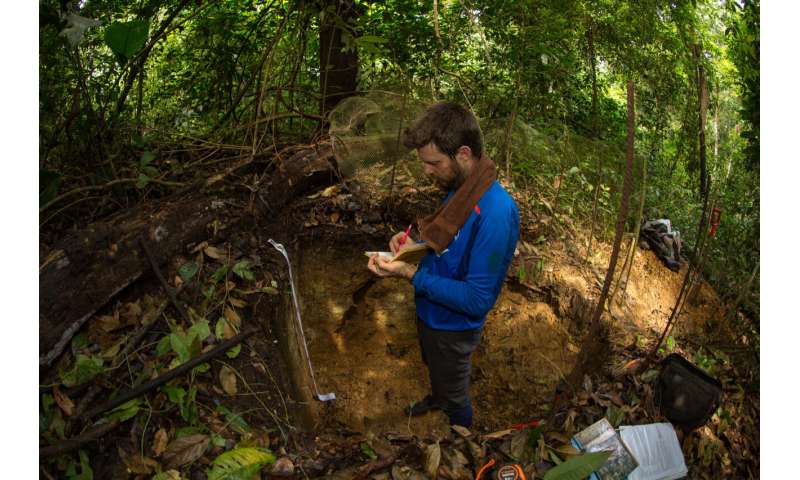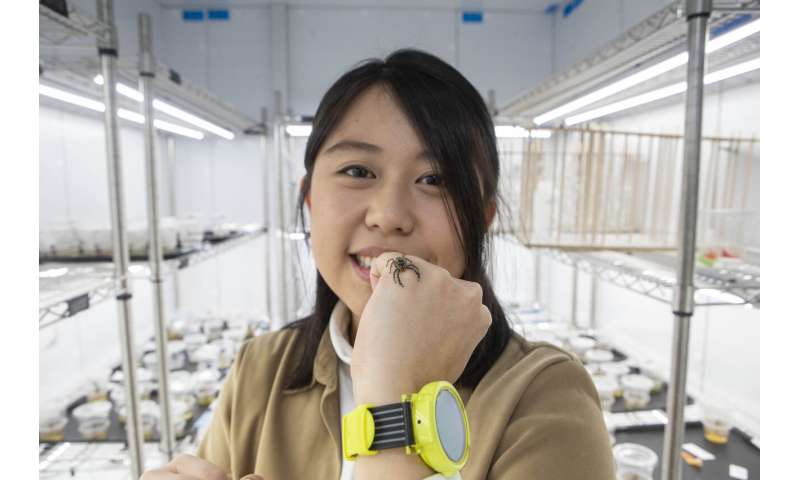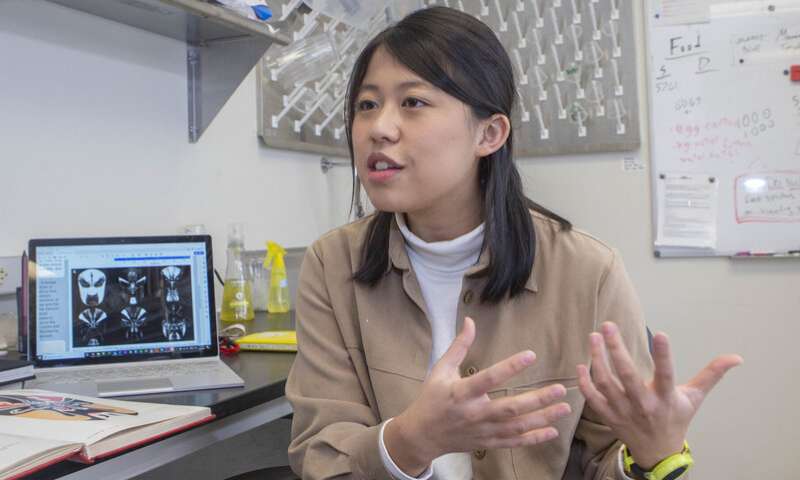by Anick Jesdanun and Brian Melley

In this June 13, 2012, file photo, Rod Beckstrom, president of the Internet Corporation for Assigned Names and Numbers (ICANN), points from behind a podium during a speech in London on expanding the number of domain name suffixes. The company that controls the dot-org online universe is putting the registry of domain names up for sale. (AP Photo/Tim Hales, File)
The company that controls the dot-org online universe is putting the registry of domain names up for sale, and the nonprofits that often use the suffix in their websites are raising concerns about the move.
About 15 people protested Friday outside the Los Angeles headquarters of the regulatory body for domain names, the Internet Corporation for Assigned Names and Numbers. ICANN is meeting this weekend and is expected to rule by mid-February on plans by private-equity firm Ethos Capital to buy the Public Interest Registry for $1.1 billion.
The protesters carried signs saying "Save Dot Org" and chanted "ICANN, you can, stop the sale."
They planned to give 34,000 signatures objecting to the sale to a board member. Around 700 organizations such as Greenpeace, Sierra Club, YMCA, YWCA and Girl Scouts of America also oppose the sale, protesters said.
Opponents are concerned the cost of registering a dot-org website will skyrocket, and they worry about the potential loss of freedoms of speech and expression if the registry is in the wrong hands.
"It's easy to put two and two together and see the concern that economic or other pressures could push this new for-profit PIR to make decisions that are detrimental to nonprofits," said Elliot Harmon, activism director of the Electronic Frontier Foundation.
Ethos Capital and the Internet Society, which runs the registry now, said those concerns are misplaced and the sale is being misunderstood.
The two groups said in a statement that prices will remain low, the registry's managers will stay in place and the infusion of capital will ensure the long-term growth of dot-org.
They also rejected assertions that online content would be spied on and censored.
"This notion is baseless and, frankly, a demonstration of the type of speculation that has taken the discussion surrounding the future of .ORG irresponsibly out of context," the statement said. "Ethos and PIR take freedom of expression very seriously, and the registry's commitment to free speech will continue unabated."
Domain names such as apnews.com have historically been used by computers to find websites and send email, and their value grew as companies and groups adopted them for branding. The Associated Press, a nonprofit, also uses a dot-org domain, ap.org.
Speculators have registered a variety of names under popular domain suffixes such as dot-com and dot-org, and an easy-to-remember name can fetch millions of dollars in the resell market. Owners of popular suffixes can collect hundreds of millions of dollars a year in registration fees.
Though domain names are less prominent these days as more people reach websites using search engines and apps, they are still important for email addresses, billboards and other non-digital advertising.
The dot-org suffix has the distinction of being one of the original domains created in the mid-1980s.
Since 2003, dot-org has been managed by the Public Interest Registry at the Internet Society, a nonprofit founded by many of the internet's early engineers and scientists. In that role, the registry collects annual fees of about $10 from each of the more than 10 million dot-org names registered worldwide.
The Internet Society uses some of that money to finance its advocacy and administrative programs, which include creating technical standards for the internet.
It said proceeds from the sale will fund an endowment to provide more diversified and sustainable resources long term. The group described Ethos Capital as "a mission-driven firm" committed to continuing the registry's operations.
The investment firm's executives include a former senior vice president at the regulatory body for ICANN.
Although dot-org is often associated with nonprofit organizations, it can by registered by anyone, including for-profit corporations and individuals. That won't change with a new, for-profit owner.
But critics worry that a for-profit owner will be more likely than a nonprofit to raise registration fees. The sale announcement said nothing about prices, and a subsequent blog post mentions only that Ethos has committed to limiting increases to 10% a year—the same cap that had been in place until ICANN lifted it in June 2019.
Critics also fear a new owner could change policies and reduce protections for domain name owners, including non-governmental organizations that operate in authoritarian countries. A website can suddenly become unreachable, for instance, if the suffix owner decides to suspend a registration.
Several advocacy groups, including the Electronic Frontier Foundation and Public Knowledge, wrote a letter to the Internet Society insisting that dot-org "be managed by a leader that puts the needs of NGOs over profits."
The suffix has been in for-profit hands before. Before the Public Interest Registry, Verisign Inc. and its predecessor, Network Solutions, managed dot-org, along with dot-com and dot-net.
© 2020 The Associated Press. All rights reserved.
The company that controls the dot-org online universe is putting the registry of domain names up for sale, and the nonprofits that often use the suffix in their websites are raising concerns about the move.
About 15 people protested Friday outside the Los Angeles headquarters of the regulatory body for domain names, the Internet Corporation for Assigned Names and Numbers. ICANN is meeting this weekend and is expected to rule by mid-February on plans by private-equity firm Ethos Capital to buy the Public Interest Registry for $1.1 billion.
The protesters carried signs saying "Save Dot Org" and chanted "ICANN, you can, stop the sale."
They planned to give 34,000 signatures objecting to the sale to a board member. Around 700 organizations such as Greenpeace, Sierra Club, YMCA, YWCA and Girl Scouts of America also oppose the sale, protesters said.
Opponents are concerned the cost of registering a dot-org website will skyrocket, and they worry about the potential loss of freedoms of speech and expression if the registry is in the wrong hands.
"It's easy to put two and two together and see the concern that economic or other pressures could push this new for-profit PIR to make decisions that are detrimental to nonprofits," said Elliot Harmon, activism director of the Electronic Frontier Foundation.
Ethos Capital and the Internet Society, which runs the registry now, said those concerns are misplaced and the sale is being misunderstood.
The two groups said in a statement that prices will remain low, the registry's managers will stay in place and the infusion of capital will ensure the long-term growth of dot-org.
They also rejected assertions that online content would be spied on and censored.
"This notion is baseless and, frankly, a demonstration of the type of speculation that has taken the discussion surrounding the future of .ORG irresponsibly out of context," the statement said. "Ethos and PIR take freedom of expression very seriously, and the registry's commitment to free speech will continue unabated."
Domain names such as apnews.com have historically been used by computers to find websites and send email, and their value grew as companies and groups adopted them for branding. The Associated Press, a nonprofit, also uses a dot-org domain, ap.org.
Speculators have registered a variety of names under popular domain suffixes such as dot-com and dot-org, and an easy-to-remember name can fetch millions of dollars in the resell market. Owners of popular suffixes can collect hundreds of millions of dollars a year in registration fees.
Though domain names are less prominent these days as more people reach websites using search engines and apps, they are still important for email addresses, billboards and other non-digital advertising.
The dot-org suffix has the distinction of being one of the original domains created in the mid-1980s.
Since 2003, dot-org has been managed by the Public Interest Registry at the Internet Society, a nonprofit founded by many of the internet's early engineers and scientists. In that role, the registry collects annual fees of about $10 from each of the more than 10 million dot-org names registered worldwide.
The Internet Society uses some of that money to finance its advocacy and administrative programs, which include creating technical standards for the internet.
It said proceeds from the sale will fund an endowment to provide more diversified and sustainable resources long term. The group described Ethos Capital as "a mission-driven firm" committed to continuing the registry's operations.
The investment firm's executives include a former senior vice president at the regulatory body for ICANN.
Although dot-org is often associated with nonprofit organizations, it can by registered by anyone, including for-profit corporations and individuals. That won't change with a new, for-profit owner.
But critics worry that a for-profit owner will be more likely than a nonprofit to raise registration fees. The sale announcement said nothing about prices, and a subsequent blog post mentions only that Ethos has committed to limiting increases to 10% a year—the same cap that had been in place until ICANN lifted it in June 2019.
Critics also fear a new owner could change policies and reduce protections for domain name owners, including non-governmental organizations that operate in authoritarian countries. A website can suddenly become unreachable, for instance, if the suffix owner decides to suspend a registration.
Several advocacy groups, including the Electronic Frontier Foundation and Public Knowledge, wrote a letter to the Internet Society insisting that dot-org "be managed by a leader that puts the needs of NGOs over profits."
The suffix has been in for-profit hands before. Before the Public Interest Registry, Verisign Inc. and its predecessor, Network Solutions, managed dot-org, along with dot-com and dot-net.
© 2020 The Associated Press. All rights reserved.












